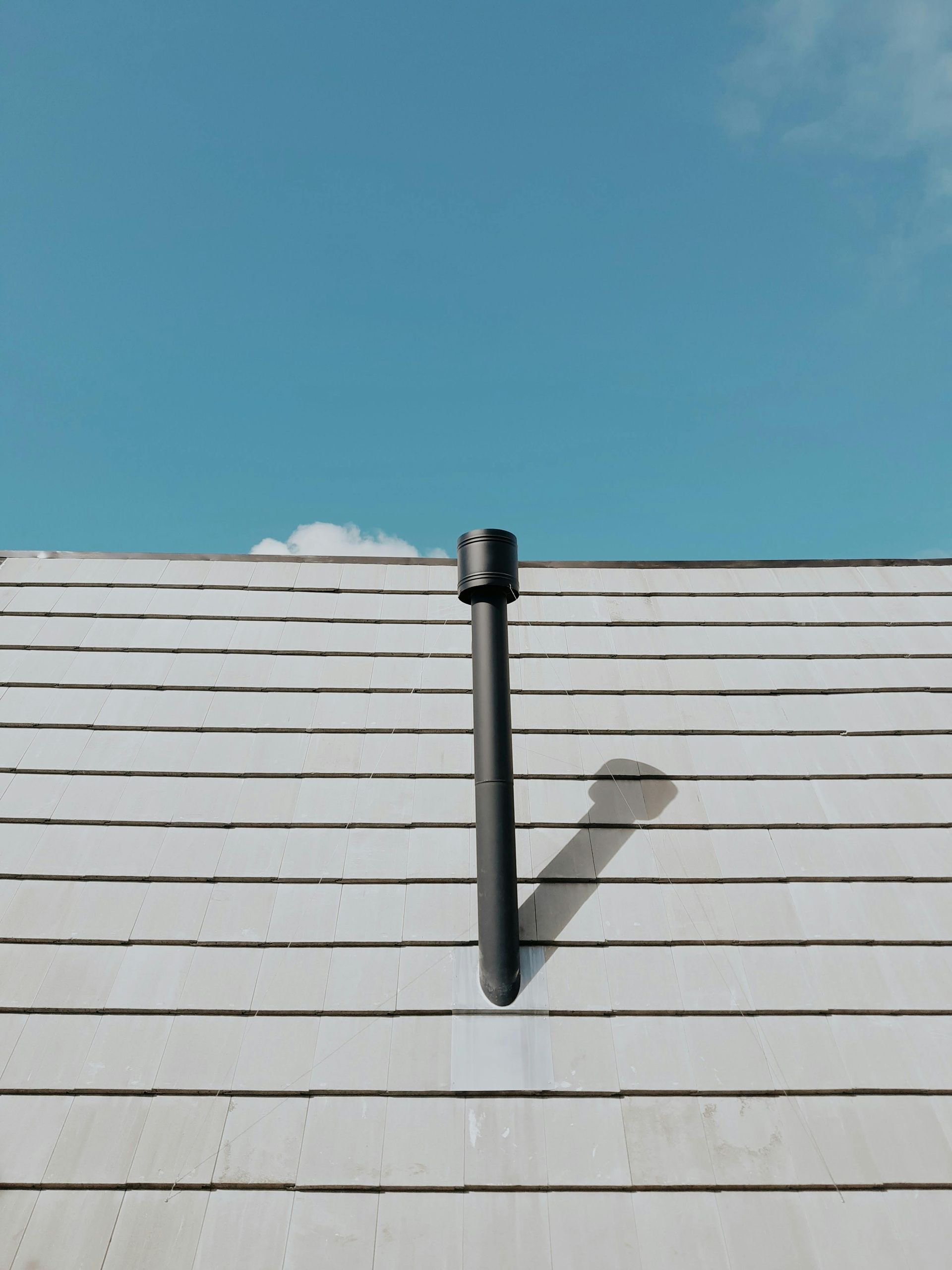Delta Weather & Roof Maintenance: Seasonal To-Do Checklist
What is the seasonal to-do checklist for Delta Weather & Roof Maintenance?
Delta Weather & Roof Maintenance starts with knowing when the Strait-of-Georgia rain, wind, sun, and salt strike hardest. Follow this four-season checklist to keep shingles tight, gutters clear, and attic air flowing, whatever Ladner or Tsawwassen skies throw down.
- Inspect shingles and flashing every equinox.
- Clear gutters after each heavy storm.
- Treat moss before May warmth.
- Re-seal fasteners during July dry spell.
- Trim overhanging limbs by October wind season.
| Season | Avg Rainfall | Roof Focus |
|---|---|---|
| Winter (DJF) | 8.8 in Nov peak | Ice dams & wind-lift |
| Spring (MAM) | 5.0 in Mar | Moss bloom & gutter sludge |
| Summer (JJA) | 1.1 in Jul low | UV cracking & reseal vents |
| Fall (SON) | 7.2 in Oct | Leaf load & storm prep |
1. Why Delta’s Micro-Climate Demands Its Own Roof Playbook
When you work rooftops as long as I have—thirty-odd winters perched above Ladner farmlands and Boundary Bay condos—you learn Delta weather is a shape-shifter. One week a Pineapple Express unloads 100 mm of rain; the next a Fraser outflow drops temperatures below freezing while a 70 km/h southeaster rattles ridge caps. November alone averages 8.8 in / 224 mm of rain, the wettest month in Metro Vancouver.Yet the July drought dips to barely 1.1 in / 28 mm —a twenty-fold swing. This feast-or-famine pattern wreaks havoc on shingles, membranes, and metal seams if homeowners treat roof care like a once-a-year chore.
Below is my 360-degree, season-by-season maintenance guide, honed on thousands of Delta roofs. I sprinkle local stats, war stories, and product tips so you can time each task with the weather—not against it.
2. Winter (December – February): Outsmart the Atmospheric River
2.1 Weather Snapshot
- Rain intensity: Sliding-31-day totals start winter near 8.3 in and finish near 5.4 in.
- Snow odds: Light but wet; 1–2 inches of heavy snow a couple of times per season.
- Wind: Fraser outflow gusts ≥ 60 km/h, especially across Boundary Bay flats.
2.2 Roofer’s Checklist
- Scout ridge caps after first gale—look for lifted tabs.
- Install heat cables on north-facing eaves.
- Rake snow ≥ 6 cm fast—wet snow is heavy.
- Re-caulk flashings in a dry window (≥ 7 °C).
- Ventilate attic daily if soffit vents frost up.
2.3 Pro Tips
- Swap brittle plastic vents for aluminum units rated 150 km/h.
- Keep a push-broom on an extension pole for safe snow pulls.
- Photograph your roof after each major storm for insurance evidence.
3. Spring (March – May): Moss, Seeds, and Sneaky Leaks
3.1 Weather Snapshot
- Rainfall moderates to roughly 5 in / 127 mm by March yet arrives in frequent drizzles.
- Temps nudge above 10 °C, ideal for algae and moss spores.
- Tree pollen & cottonwood fluff clog half the gutters I clear on River Road.
3.2 Roofer’s Checklist
- Treat moss before Victoria Day.
- Flush gutters once buds burst.
- Inspect plywood from the attic—dark marks mean leaks.
- Top-up blown-in insulation where snow drifted in.
- Check skylight gaskets for UV splits.
3.3 Science Corner: Why Moss Loves Delta
Delta’s marine layer keeps rooftop humidity > 75 % most nights from March through June. Moss hardly drinks rain; it sips dew. A quarter-inch cushion of moss can hold four times its weight in water, wicking that moisture under shingle edges. Early treatment keeps granules intact and extends roof life by three to five years.
3.4 Practical Stories
I once replaced a 12-year-old laminate shingle roof in Annieville because moss roots tunneled through the mat. The homeowner power-washed every April, thinking it “cleaned” the roof. In reality, each blast stripped granules, speeding decay. Soft-wash chemicals plus a stiff brush is gentler—and lasts a full year.
4. Summer (June – August): The Silent UV Assassin
4.1 Weather Snapshot
- Rainfall trough: 1.1 in / 28 mm in July.
- Daytime highs hit 25–30 °C; roof surfaces reach 65 °C.
- UV Index peaks at 7-8; asphalt oils evaporate rapidly.
4.2 Roofer’s Checklist
- Reseal exposed fastener heads with high-temp polymer.
- Paint metal flashings white to repel heat.
- Add ridge vent if attic tops 50 °C.
- Schedule a professional inspection for hairline cracks.
- Document every fix—tax assessors love receipts.
4.3 Heat-Related Failures
Thermal cycling loosens nails: expansion midday, contraction at night. One loose nail per 100 sq ft invites leaks when fall storms return. Summer is also prime time for thermal splitting on old 3-tab shingles—thin slots tear open along their length. Spot a 5 cm crack? Plan on replacement within two years.
4.4 Material Choices for Delta Sun
- Cool-roof metal panels reflect 65 % of solar radiation, cooling attics 8–12 °C.
- Class 4 impact shingles with Scotchgard® shrug off UV and hail.
- Self-healing polymer underlays reseal around fasteners in the July heat.
5. Fall (September – November): The Big Clean & Storm Drill
5.1 Weather Snapshot
- Rain ramps up from 2.6 in (Sep) to 7.2 in (Oct), then November deluge.
- Leaf drop from Ladner’s towering maples blankets gutters within two weeks.
- First Arctic outrush can strike mid-November, turning rain to slush.
5.2 Roofer’s Checklist
- Trim limbs ≥ 2 m away to cut leaf load.
- Install gutter guards by equinox.
- Tighten all mechanical flashings.
- Stock an emergency tarp kit.
- Walk the roof after the first bomb-cyclone.
5.3 Wind Physics in Boundary Bay
Fall wind storms often arrive at low tide, gaining fetch over the exposed flats. Gusts accelerate up bluffs and strike roofs at steep angles. Ridge caps act like wings: once uplift equals shingle weight plus nail tension, they sail. Using six nails per shingle (instead of four) increases withdrawal resistance 40 %.
6. Annual Quick-Glance Calendar
| Month | Key Task | Why It Matters |
|---|---|---|
| Jan | Clear snow dams | Prevent melt-back leaks |
| Mar | Moss treatment | Spores germinate < 12 °C |
| May | Downspout flush | Seed pods clog elbows |
| Jul | UV sealant touch-ups | Asphalt soft at 60 °C |
| Sep | Limb trimming | Cuts leaf load 50 % |
| Nov | Pre-storm fastener check | Wind uplift peaks |
7. Tool-Kit for the DIY Delta Homeowner
- 30-ft Type 1 fiberglass ladder—corrosion-resistant.
- 12 V soft-wash sprayer for moss treatments.
- Wide-mouth gutter scoop for cedar duff.
- Thermal camera phone attachment for hidden moisture.
- Flat, sticky-rubber roof shoes rated to 30° pitch.
8. Red-Flag Scenarios That Demand a Pro
- Shingle grit in gutters after one storm.
- Musty smell in upper bedrooms.
- Ceiling paint bubbles in corners.
- Granular “bald spots” wider than a fist.
- Deck sag between trusses.
9. Budgeting for Preventive Care
| Action | Frequency | Cost (DIY) | Pro Cost | Savings vs Replacement |
|---|---|---|---|---|
| Moss treatment | Yearly | $45 | $250 | Extends life 3–5 yrs |
| Gutter clean | Twice-yearly | $0 | $180 | Prevents fascia rot |
| Flashing reseal | Biennial | $30 | $150 | Stops 90 % leaks |
| Pro inspection | Biennial | — | $175 | Detects issues early |
Full tear-off replacement runs $12–$18 per ft² in Delta (plywood $80/sheet, landfill fees rising). Spending a few hundred per year beats a $30 k bill at year 15.
10. Environmental Extras
Delta’s Burns Bog is a massive carbon sink; keeping old roofing out of landfills complements its ecological role. Consider recyclable standing seam metal or synthetic slate with 50-year warranties when your roof finally taps out. Add a white membrane where solar PV may go—the reflection improves panel efficiency 10 %.
11. Frequently Asked Questions
Does salty Boundary Bay air corrode metal roofs?
Not if you coat fasteners with butyl and choose panels factory-sealed with PVDF paint rated for C5 coastal exposure.
How often should I replace skylight flashing?
Every 10–12 years or whenever plexiglass yellows; UV and sealant shrinkage drive leaks more than rain volume.
Can I pressure-wash cedar shakes?
No. High pressure erodes soft latewood, cutting shingle life in half. Stick to low-pressure oxalic acid rinse instead.
12. Final Word from the Rooftop
Delta’s weather doesn’t wait for your calendar. Atmospheric rivers ignore hockey games; summer UV won’t postpone cracking because you’re holidaying on the coast. Yet roofs talk—through loose granules, bubbling paint, and that faint drip you hear at 3 a.m. Listen early, act seasonally, and your home will shrug off our Pacific playground’s mood swings.
As always, if you’d rather keep two feet on the ground, give Paragon Roofing BC a call. We’ll climb the ladder—rain or shine—so you can stay warm, dry, and worry-free.




